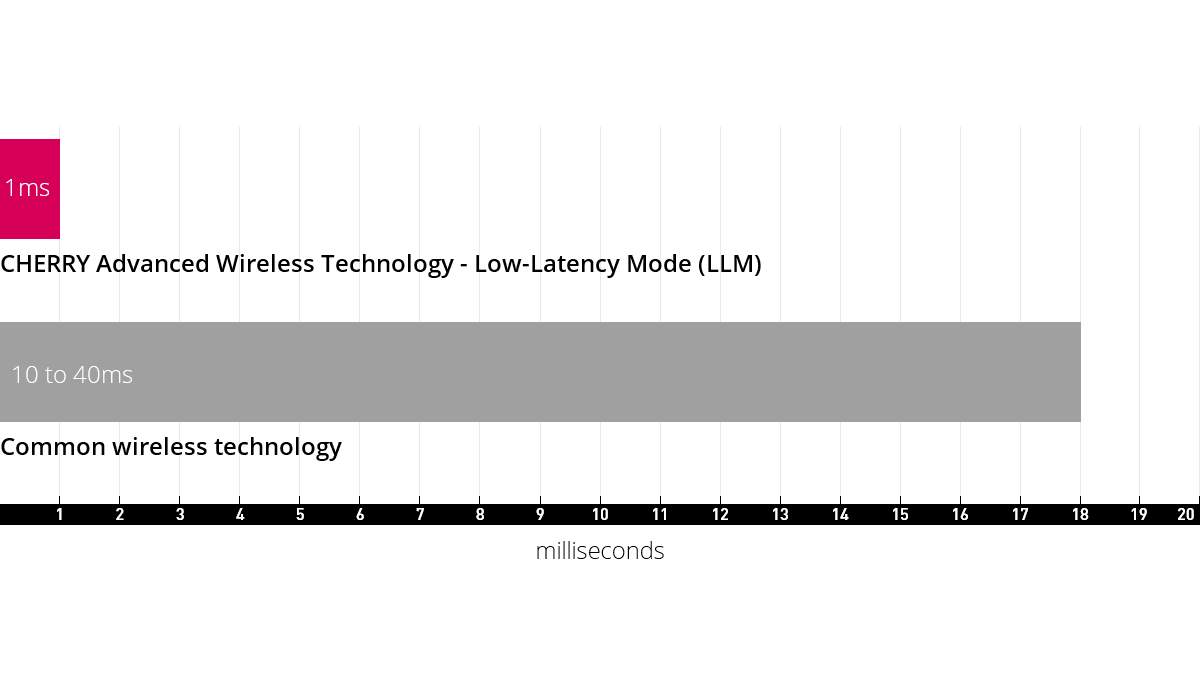ADVANCED WIRELESS TECHNOLOGY
Low-Latency Mode
At the core of CHERRY Advanced Wireless Technology is a special Low-Latency Mode (LLM), using a brand-new, very fast Bluetooth technology. This mode is designed for virtual reality headsets, gaming mice, and gaming keyboards.

Bluetooth®
Bluetooth® mode is ideally suited for connecting different devices with your workstation simultaneously. The advantages are a more stable connection compared to Radio Frequency connections.

USB Cable
While you can play your favourite game without any wireless latency at all, your device charges via USB.
Fast as cabled - but wireless
At the core of CHERRY Advanced Wireless Technology is a special Low-Latency Mode (LLM), using a brand-new, very fast Bluetooth® technology. This mode is designed for applications in which the interface response time is critical for the user – such as virtual reality headsets, gaming mice, and gaming keyboards. The technology is based on a coexistence specification, which defines how multiple wireless products should communicate with a minimum of interference, thus opening the doorway to lower latencies. LLM also allows for extremely short data packages, driving the latency further down.
Under ideal conditions, LLM enables a connection interval and transmission latency of 1 ms.
(For comparison: regular fast radio standards usually offer latencies of 10 to 40 ms).
Connection interval and transmission latency


Safe and stable connection
This is achieved, among other things, by smaller data packets, which enable more reliable transmission in terms of susceptibility to interference, faster correction in the event of interference, and fast transmission of the smaller data volumes, which in return are sent more frequently than with typical radio methods.
To minimize coexistence/susceptibility to other devices and sources of radio interference, LLM uses 40 channels in the ISM radio band, switching channels up to 1600 times per second using Frequency Hopping Spread Spectrum (FHSS). (For comparison, typical proprietary RF radio methods use 5-8 channels to avoid interference sources).
